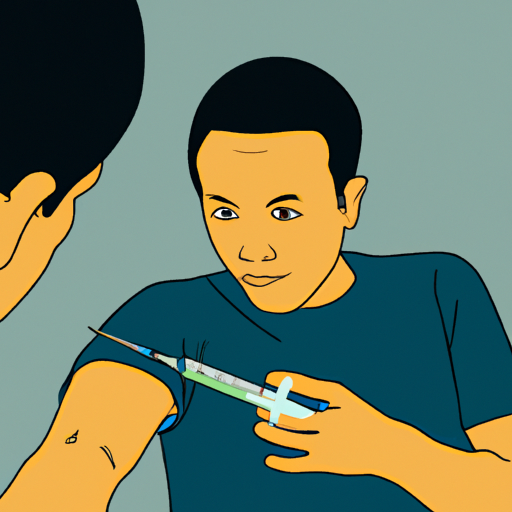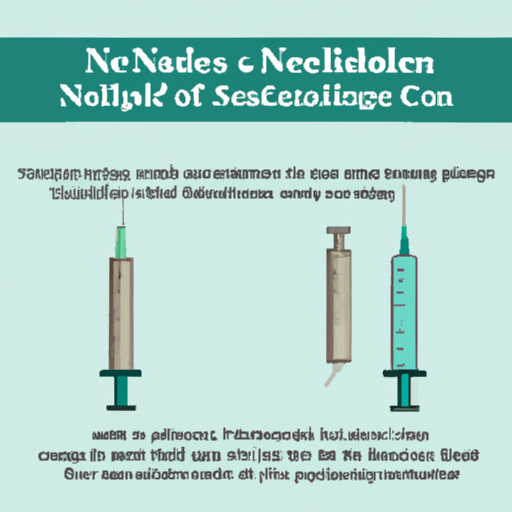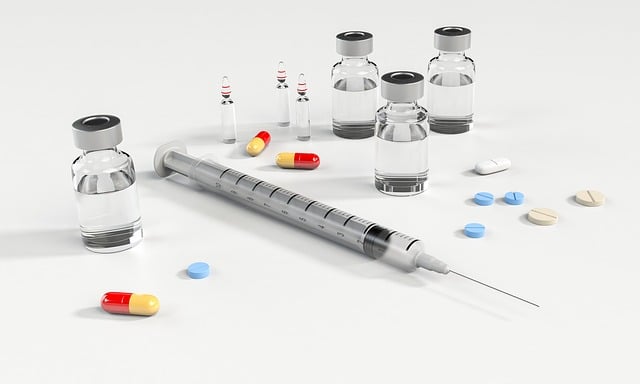This blog post delves into the revolutionary medical technology of needleless injections, offering a comprehensive analysis of their numerous advantages. It discusses the role these injections have in improving patient comfort, increasing vaccination rates, offering cost-effectiveness, and reducing needle-stick injuries.
"Why Fear Needles?": Understanding Needle Phobia and its Implications
Needles have long been the primary method for administering injections, but for many individuals, the fear of needles can be debilitating. Needle phobia, also known as trypanophobia, is a common condition that affects a significant portion of the population. The fear of needles can cause individuals to avoid necessary medical procedures, leading to missed vaccinations and delayed treatments. This fear can have serious implications for public health, as it hinders the effectiveness of immunization programs and puts individuals at risk of preventable diseases. Understanding the impact of needle phobia is crucial in finding alternative methods, such as needleless injections, to alleviate this fear and ensure better healthcare outcomes.
Individuals with needle phobia often experience symptoms such as rapid heart rate, sweating, and even fainting at the sight or thought of needles. This fear can be deeply rooted and may stem from traumatic experiences or a general anxiety towards medical procedures. The implications of needle phobia are far-reaching, affecting not only the individual but also healthcare providers and public health initiatives. In the case of vaccinations, needle phobia can lead to lower vaccination rates, leaving communities vulnerable to outbreaks of preventable diseases. Moreover, individuals with needle phobia may avoid seeking necessary medical treatments, resulting in delayed diagnoses and worsening health conditions.
By understanding the implications of needle phobia, healthcare professionals can work towards providing alternative methods of administering injections. Needleless injections have emerged as a promising solution to alleviate this fear and improve healthcare outcomes. With needleless injection technologies, medication can be delivered through a high-velocity jet or a fine stream without the use of a needle. This innovative approach not only reduces the fear and anxiety associated with needles but also offers other advantages such as reduced pain, minimized risk of infection, and improved convenience.

An illustration showing a patient expressing fear while being approached with a needle
How Do Needleless Injections Increase Vaccination Rates?
- Overcoming Fear and Anxiety:
Needleless injections offer a solution to one of the major barriers to vaccination:
needle phobia. By eliminating the use of needles, individuals who experience fear and anxiety surrounding injections are more likely to participate in vaccination programs. This is particularly important when it comes to children, who often have an aversion to needles. Needleless injections can help create a more positive vaccination experience, reducing the fear and anxiety associated with traditional needle injections and increasing the likelihood of individuals receiving their necessary vaccinations. - 2. Enhanced Convenience and Accessibility:
Needleless injections also offer enhanced convenience and accessibility, which can significantly impact vaccination rates. Traditional needle injections often require trained healthcare professionals to administer the vaccines, limiting the availability and accessibility of vaccination services. With needleless injection technologies, vaccines can be self-administered or easily administered by non-medical personnel, such as pharmacists or trained individuals in community settings. This not only reduces the burden on healthcare providers but also increases the accessibility of vaccinations, particularly in remote or underserved areas where access to healthcare services may be limited. - 3. Improved Vaccine Compliance:
Another advantage of needleless injections is their potential to improve vaccine compliance. Some vaccines require multiple doses over a specific timeframe to provide optimal protection. However, the fear of needles and the discomfort associated with traditional injections can deter individuals from completing the full vaccine schedule. Needleless injections, with their reduced pain and fear factor, can improve vaccine compliance by making the vaccination experience more tolerable and encouraging individuals to complete the recommended vaccine series. Increased compliance leads to better protection against diseases and ultimately contributes to higher vaccination rates in the population.
"A Cost-Effective Solution": Can Needleless Injections Reduce Healthcare Expenditure?
Needleless injections not only offer advantages in terms of patient experience and accessibility but also have the potential to reduce healthcare expenditure. Traditional needle injections require the use of needles, syringes, and other disposable materials, all of which contribute to the overall cost of healthcare. By eliminating the need for these materials, needleless injections can significantly reduce the expenses associated with vaccination programs and other medical procedures.
In addition to reducing the cost of supplies, needleless injections can also lead to savings in terms of healthcare personnel. Traditional injections often require trained healthcare professionals to administer the vaccines, increasing the demand for their time and expertise. However, with needleless injection technologies, vaccines can be self-administered or administered by non-medical personnel, such as pharmacists or trained individuals in community settings. This not only reduces the burden on healthcare providers but can also lead to cost savings by optimizing the utilization of healthcare resources.
Furthermore, needleless injections can potentially reduce the number of adverse events and complications associated with traditional needle injections. Needle-stick injuries, for example, can lead to infections and other complications, resulting in additional healthcare costs. By eliminating the use of needles, needleless injections reduce the risk of such injuries, thereby reducing the need for medical intervention and associated expenditure.
Finally, improved vaccine compliance facilitated by needleless injections can have long-term cost benefits for healthcare systems. By increasing the number of individuals who complete their vaccine series, needleless injections help to prevent the spread of vaccine-preventable diseases. This, in turn, reduces the burden on healthcare systems in terms of treating and managing these diseases, leading to potential cost savings in the long run.

An infographic detailing the cost comparison between traditional needle injections and needleless injections
The Unexpected Hero: Needleless Injections in Preventing Needle-Stick Injuries
Needle-stick injuries are a significant concern in healthcare settings, posing risks to both healthcare providers and patients. These injuries occur when a needle accidentally punctures the skin, potentially exposing individuals to bloodborne pathogens and infections. However, needleless injections have emerged as an unexpected hero in preventing needle-stick injuries.
By eliminating the need for needles, needleless injection technologies greatly reduce the risk of accidental needle punctures. Instead of a sharp needle, these devices use innovative mechanisms to deliver medications or vaccines through the skin. This not only eliminates the possibility of needle-stick injuries but also provides a safer environment for healthcare providers and patients alike.
Moreover, the prevention of needle-stick injuries through needleless injections has significant implications for infection control. When a needle-stick injury occurs, there is a risk of transmitting bloodborne pathogens such as hepatitis B, hepatitis C, and HIV. By reducing the occurrence of needle-stick injuries, needleless injections help to minimize the potential spread of these infections, protecting both healthcare providers and patients from harm.
In addition to the direct benefits of preventing needle-stick injuries, needleless injections also contribute to a positive work environment for healthcare providers. The fear of needle-stick injuries can create anxiety and stress among healthcare professionals, affecting their job satisfaction and overall well-being. By providing a safer alternative, needleless injections alleviate this fear and promote a more comfortable and confident working environment.
Advantages of Needleless Injections:
| Advantage | Benefit | Cost Savings | Safety |
|---|---|---|---|
| Improved Patient Comfort | Reduces the need for anesthesia | Reduced need for medical equipment | Reduced risk of needle-stick injuries |
| Increased Vaccination Rates | Reduces fear of needles | Reduced need for medical staff | Minimized risk of infection |
| Cost Effectiveness | Eliminates the need for needles and syringes | Reduced medical supplies costs | Reduced risk of cross-contamination |
| Reduced Needle-Stick Injuries | Eliminates the need for needle disposal | Reduced personnel costs | Reduced risk of exposure to hazardous materials |
In conclusion, needleless injections offer a myriad of benefits that stand to revolutionize the medical field. They foster greater patient compliance, mitigate the risk of needle-stick injuries, and provide a cost-effective solution for mass vaccinations. As this technology continues to evolve, it is destined to become an indispensable tool in healthcare.
הכותבת אינה רופאה, אין להתייחס לכתבה כאל המלצה לביצוע או ייעוץ כלשהו. עליך לדבר קודם עם מומחה מוסמך בצורה אישית לפני נקיטת פעולה כלשהי



